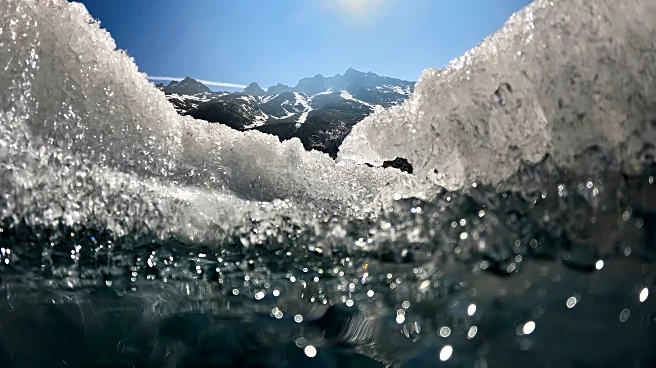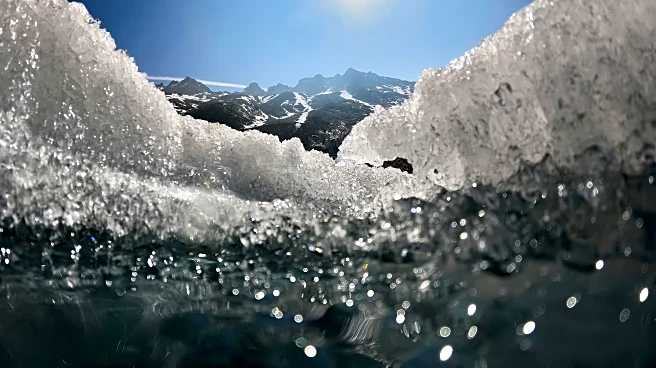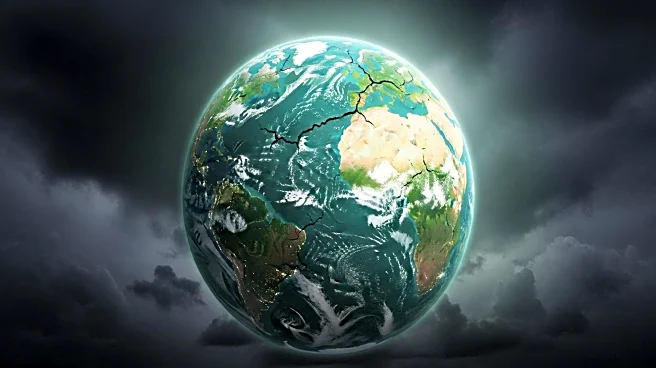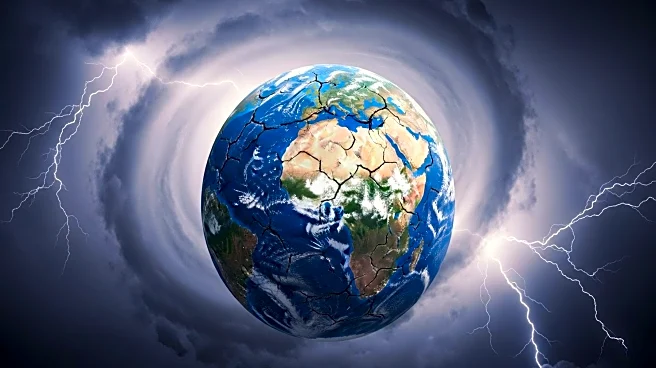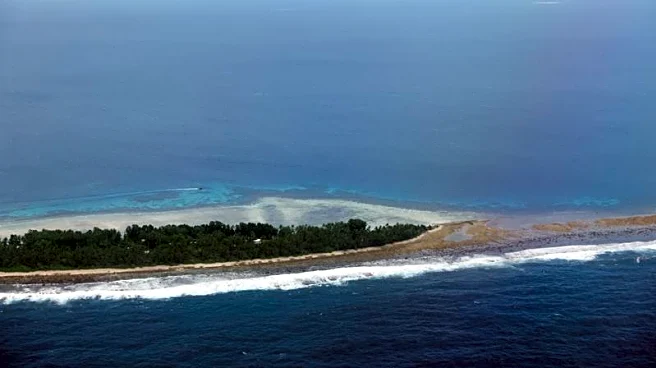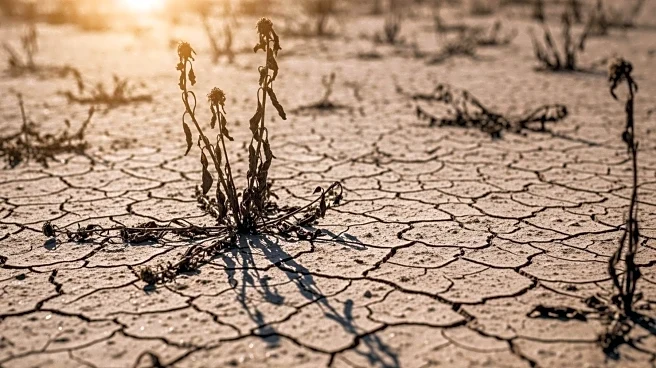What's Happening?
Switzerland's glaciers are experiencing accelerated melting, with over 1,000 small glaciers having disappeared. The United Nations International Year of Glaciers' Preservation has seen significant glacier loss due to a combination of low winter snowfall and heatwaves in June 2025. This year marked the fourth greatest shrinkage in ice volume, contributing to a decade of rapid ice loss. Glaciers in regions such as the Claridenfirn, Plaine Morte, and Silvretta have seen reductions in ice thickness by over two meters. The Swiss Commission for Cryosphere observation (SCC) and other institutions are monitoring these changes, which have implications for mountain stability and potential natural disasters.
Why It's Important?
The accelerated melting of Swiss glaciers has significant implications for environmental stability and safety in the region. The loss of ice contributes to the destabilization of mountains, increasing the risk of avalanches and rockslides, as evidenced by recent events in the Lötschental valley. This situation poses a threat to local communities and infrastructure. Additionally, the melting glaciers are a visible indicator of climate change, highlighting the urgent need for global environmental policy and action. The data collected by Swiss monitoring networks is crucial for understanding these changes and informing policy decisions.
What's Next?
Continued monitoring by the Swiss Commission for Cryosphere observation and related institutions will be essential to track the ongoing changes in glacier volume and stability. These organizations will likely advocate for increased awareness and policy measures to address the impacts of climate change. The data collected will also contribute to international climate research and discussions. Local governments and communities may need to implement safety measures and infrastructure adaptations to mitigate the risks associated with glacier melting and mountain destabilization.
Beyond the Headlines
The melting of Swiss glaciers is not only a local issue but also a global environmental concern. It reflects broader climate change trends that affect ecosystems, water resources, and weather patterns worldwide. The situation underscores the importance of international cooperation in climate research and policy-making. The cultural and economic implications for regions dependent on glaciers for tourism and water supply are also significant, necessitating adaptive strategies to sustain these industries.

